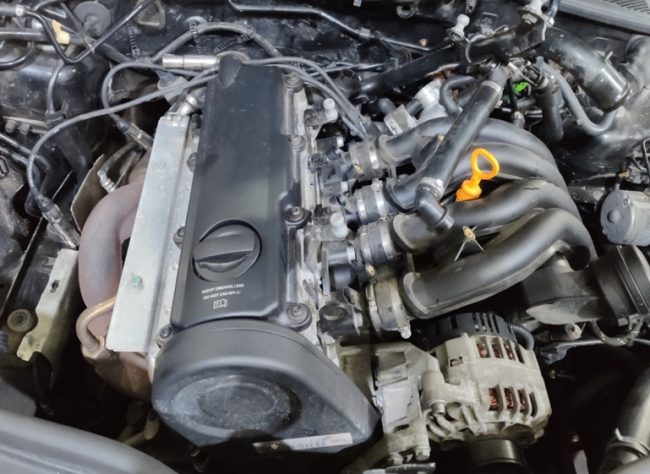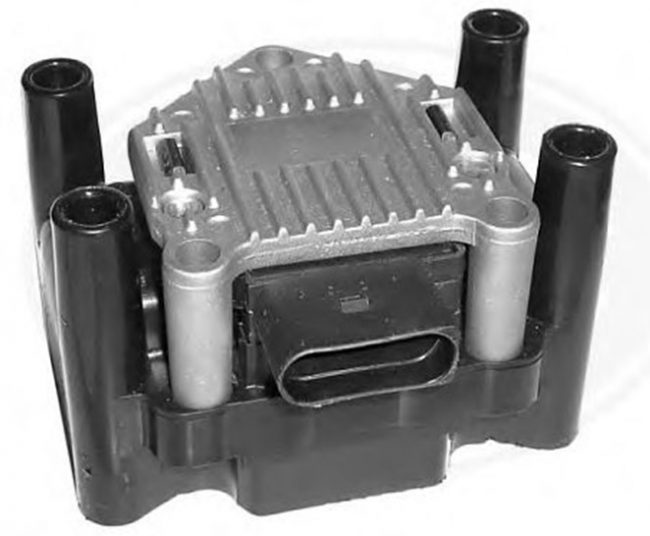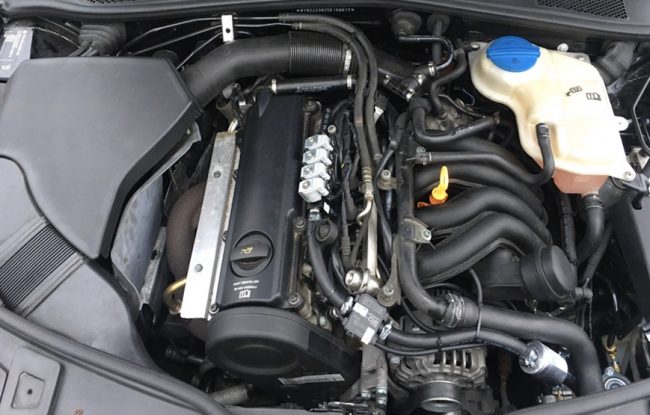
Volkswagen ALZ engine
Content
For the restyled version of the VW Passat B5, the engine builders of the Volkswagen concern created their own power unit, which additionally received a residence permit for Audi. He took his rightful place in a wide range of Volkswagen engines EA113-1,6 (AEN, AHL, AKL, ANA, APF, ARM, AVU, BFQ, BGU, BSE, BSF).
Description
The new series of EA113 engines appeared as a result of the refinement of the EA827 line of engines. The innovative aspects of the modernization were the elimination of the intermediate shaft from the design, the replacement of the ignition system with a more reliable and progressive one, the introduction of an aluminum cylinder block, etc.
One of the representatives of the new ICE series was the Volkswagen 1.6 ALZ engine. Its assembly was carried out at the production facilities of the VAG auto concern from 2000 to 2010.
A distinctive feature of the unit is its simple device, sufficient power, simple maintenance. These characteristic moments did not go unnoticed by motorists - instead of coils, an ignition module, there is no turbine, simple, like on a Zhiguli, they write in their reviews.
The Volkswagen ALZ engine is atmospheric, with an in-line arrangement of four cylinders, with a volume of 1,6 liters, with a capacity of 102 hp. with and a torque of 148 Nm.

Installed on the following models of the VAG concern:
- Audi A4 B5 /8D_/ (2000-2001);
- A4 B6 /8E_/ (2000-2004);
- A4 B7 /8E_/ (2004-2008);
- Seat Exeo I /3R_/ (2008-2010);
- Volkswagen Passat B5 Variant /3B6/ (2000-2005);
- Passat B5 sedan /3B3/ (2000-2005);
- Seat Exeo /3R_/ (2009-2010).
The cylinder block is cast aluminum. Cast iron sleeves are pressed inside. It is believed that this design is the best for a car engine. About 98% of all automotive internal combustion engines with aluminum blocks are produced using this technology.
The piston is made according to the traditional scheme, with three rings. Two upper compression, lower oil scraper. A feature of the piston is its reduced top land.
The connecting rods have undergone changes, or rather their shape. Now they have become trapezoidal.
The block head is aluminum. Eight valve guides are pressed into the body. At the top is a single camshaft (SOHC). An innovative innovation in the design of the valve mechanism was the use of roller rocker arms. The hydraulic compensators that regulate the thermal clearance of the valves are preserved.
Timing belt drive. Attention is drawn to the reduction of the belt replacement period, since its breakage causes the valves to bend and the cylinder head to collapse.
Combined type lubrication system. The oil pump, unlike previously produced units, was driven by a crankshaft. The capacity of the system is 3,5 liters. Recommended oil 5W-30, 5W-40 with VW 502/505 approval.
Fuel supply system. The manufacturer recommends the use of AI-95 gasoline. The use of AI-92 is allowed, but the speed characteristics of the motor are not fully manifested on it.
Engine control system (ECM) Siemens Simos 4. Instead of a high-voltage coil, an ignition module is installed. Candles NGK BKUR6ET10.

The ECM circuit has become more reliable due to its complication (for example, a second knock sensor is installed). Car owners note that the engine ECU fails very rarely. Throttle actuator electronic.
A nice feature of the internal combustion engine for our motorists is the ability to transfer from gasoline to gas.

The general conclusion on the ALZ unit follows from the recall of the 1967s car owner from Moscow: "... the motor itself is quite simple and unpretentious."
Technical specifications
| Manufacturer | car concern VAG |
| Release year | 2000 |
| Volume, cm³ | 1595 |
| Power, hp from | 102 |
| Power index, l. s/1 liter volume | 64 |
| Torque, Nm | 148 |
| Compression ratio | 10.3 |
| Cylinder block | aluminum |
| Number of cylinders | 4 |
| Cylinder head | aluminum |
| Fuel injection order | 1-3-4-2 |
| Cylinder diameter, mm | 81 |
| The piston stroke, mm | 77,4 |
| Timing drive | belt |
| Number of valves per cylinder | 2 (SOHC) |
| Turbocharging | no |
| Hydraulic compensators | Yes |
| Camshaft adjuster | no |
| Lubrication system capacity, l | 3.5 |
| Applied oil | 5W-30, 5W-40 |
| Oil consumption (calculated), l / 1000 km | to 1,0 |
| Fuel system | injector, port injection |
| Fuel | gasoline AI-92 |
| Environmental standards | Euro 4 |
| Resource, outside. km | 330 |
| Start-Stop system | no |
| Location | longitudinal |
| Tuning (potential), l. With | 113* |
*after chip tuning
Reliability, weaknesses, maintainability
Reliability
The ALZ engine turned out to be extremely successful. Car owners in their reviews express mostly positive opinions. So, Andrey R. from Moscow writes: “... good, reliable engine, does not eat oil».
vw DENIS fully agrees with him: “… there are no special problems. The engine is economical and simple, in the event of a breakdown, repairs will be cheaper for anyone. Of course, I wanted more power on the track, but you can spin up to 5 thousand. revs and then fine. In general, I am satisfied, the operation is inexpensive. I do scheduled maintenance replacements on my own, I have never shown it to the service».
The use of modern innovations in the creation of the engine made it possible to create a truly worthy unit.
Some motorists are interested in the possibility of forcing the motor. The margin of safety allows such manipulations to be painless. But tuning is not safe.
Replacing any components and parts in the engine leads to a reduction in its resource by dozens of times. Additionally, technical and speed characteristics are changing, and not for the better.
With serious tuning, only the cylinder block will remain native from the engine. Even the cylinder head will have to be changed! The expenditure of manpower and resources will lead to the possibility of increasing the capacity by more than two times. But only after a run of 30-40 thousand km, the motor will have to be scrapped.
At the same time, a simple chip tuning (flashing the ECU) will add about 10 hp to the engine. with no harm to the motor itself. Against the background of the overall power of the motor, such an increase is unlikely to be noticeable.
Weak spots
It should be noted that weaknesses in the engine appear solely for two reasons: natural wear and low quality of our fuels and lubricants.
Floating idle speed and the occurrence of vibrations are observed when the nozzles or throttle are clogged. The problem is solved by cleaning them with the subsequent use of high-quality gasoline.
The crankcase ventilation system also requires constant monitoring. Trivial flushing of its nodes often eliminates the malfunctions that have arisen.
Over time, the intake manifold seals deteriorate. There is only one way out - replacement.
On most engines, after a run of 200 thousand km, oil consumption increases, up to the occurrence of an oil burn. This trouble is solved by replacing the valve stem seals. Often in this case, it is necessary to change the piston rings due to their wear limit.
On older engines, clogging of the oil heat exchanger is observed. A rare change of antifreeze is the main reason for this phenomenon. If flushing does not give a positive result, the heat exchanger will have to be replaced.
As you can see, all the weak points in the engine are caused artificially, they have nothing to do with the design of the motor itself.
Maintainability
VW ALZ has a high maintainability. The cylinder block can be bored to repair dimensions. The simplicity of the design of the unit contributes to the restoration work in garage conditions.
On this topic, there are many statements by car owners in specialized forums. For example, Passat Taxi from Cheboksary claims that: "... ALZ is easier to fix than a nine».
Mih@tlt from Togliatti speaks about the repair in more detail: “... in the summer I went through the engine, rings, all liners, oil pump, cylinder head gasket and bolts along the way = total 10 thousand rubles for spare parts, while half are original, the other half are quality substitutes. I think it's very budget friendly. Well, it’s true that I didn’t spend money on work, I did it myself».
There are no difficulties with the purchase of spare parts, they are available in every specialized store. In addition, some motorists use the services of showdowns. On the secondary, as a rule, the parts are original, but their residual life may be minimal.
The process of restoration work itself does not cause great difficulties. With knowledge of the technological process of repair and possession of the skills to perform locksmith work, you can safely take up the job.
For a deeper understanding of the ease of repair, you can watch a video on replacing the ignition module:


Watch this video on YouTube
Some car owners choose instead of repairing the option of replacing the engine with a contract one.
Contract engine VW ALZ
Its cost consists of many factors and starts from 24 thousand rubles.

